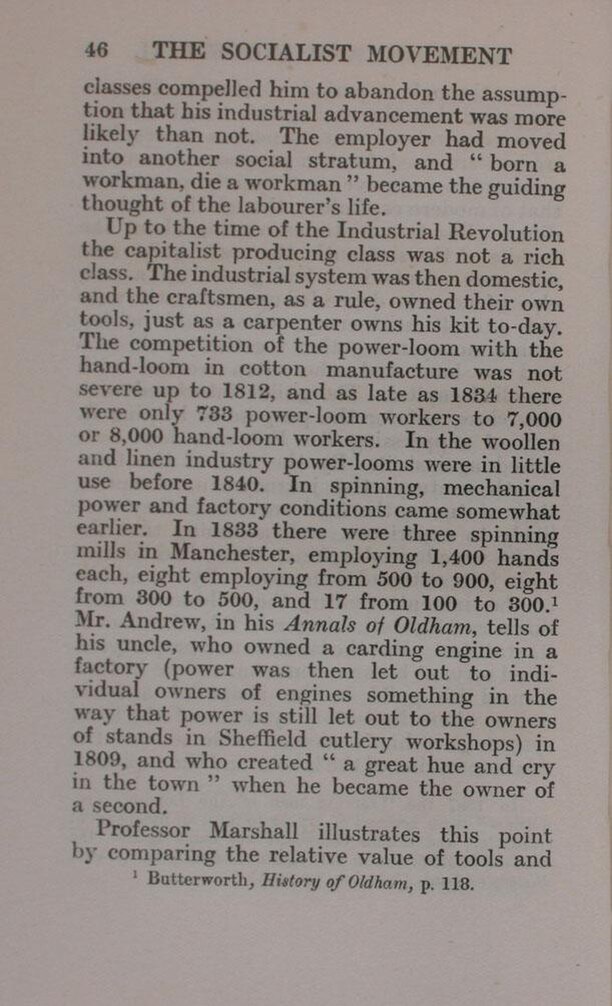classes compelled him to abandon the assumption that his industrial advancement was more likely than not. The employer had moved into another social stratum, and "born a workman, die a workman" became the guiding thought of the labourer’s life.
Up to the time of the Industrial Revolution the capitalist producing class was not a rich class. The industrial system was then domestic, and the craftsmen, as a rule, owned their own tools, just as a carpenter owns his kit to-day. The competition of the power-loom with the hand-loom in cotton manufacture was not severe up to 1812, and as late as 1884 there were only 733 power-loom workers to 7,000 or 8,000 seer workers. In the woollen and linen industry power-looms were in little use before 1840. In spinning, mechanical power and factory conditions came somewhat earlier. In 1883 there were three spinning mills in Manchester, employing 1,400 hands each, eight employing from 500 to 900, eight from 300 to 500, and 17 from 100 to 300.[1] Mr. Andrew, in his Annals of Oldham, tells of his uncle, who owned a carding engine in a factory (power was then let out to individual owners of engines something in the way that power is still let out to the owners of stands in Sheffield cutlery workshops) in 1809, and who created "a great hue and cry in the town" when he became the owner of a second.
Professor Marshall illustrates this point by comparing the relative value of tools and
- ↑ Butterworth, History of Oldham, p. 118.
